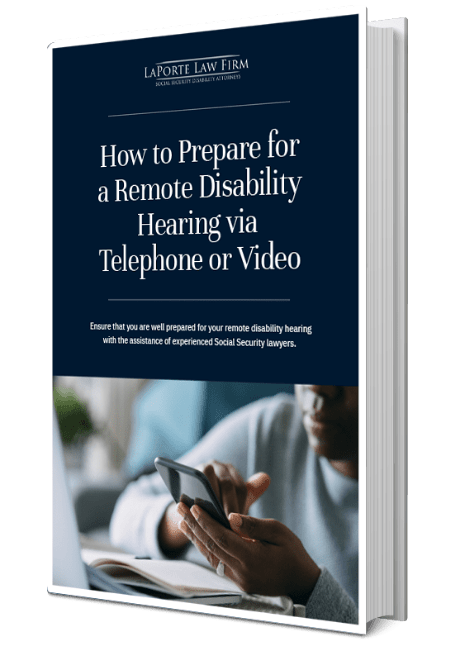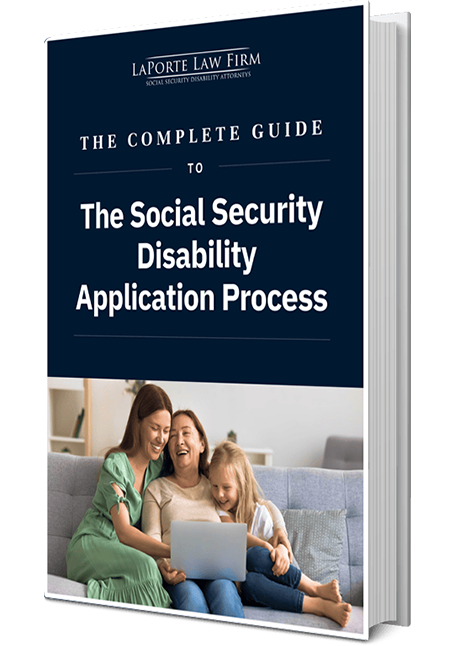
On August 26, 2019, the Social Security Administration released Social Security Ruling 19-4p, a new Ruling that addresses primary headache disorder. This Ruling explains how the Social Security Administration (“SSA”) evaluates primary headache disorders in disability claims. It clarifies how SSA will establish that a person has a medically determinable impairment of a primary headache disorder.
In our office’s cases involving headache or migraine impairments, we have recommended that our clients document their headaches through calendars, journals, or use of “symptom aps” to show the severity, length and frequency of their headaches over periods of weeks or months. The documentation can be shown to a treating doctor to provide data for treatment, and we have used this form as exhibits in our clients’ SSA appeal files as persuasive evidence to SSA judges. SSR 19-4p endorses use of this type of “headache journal to document when the headaches occur, how long they last, what symptoms are associated with the headaches, and other co-occurring environmental factors.”
What is Primary Headache Disorder?
Headaches are a complex neurological disorder involving recurring pain in the head, scalp, or neck. The Ruling explains that primary headache disorders are a collection of chronic headache illnesses characterized by repeated exacerbations of overactivity or dysfunction of pain sensitivity in the head. Primary headache disorders are among the most common disorders of the nervous system. Common examples of common primary headaches are migraines, tension-type headaches, and trigeminal autonomic cephalalgias.
How is Primary Headache Disorder Diagnosed?
Doctors will diagnose a primary headache disorder after reviewing a person’s full medical and headache history and conducting a physical and neurological examination. Physicians will make the diagnosis only after excluding alternative medical and psychiatric causes of a person’s symptoms. The Ruling notes that laboratory tests and imaging scans may be conducted to rule out other medical conditions causing the headaches, which would then be evaluated by SSA under the rules for the other condition.
Primary Headache Disorder as a Medically Determinable Impairment
SSA will consider a person age 18 or older disabled if he is unable to engage in any substantial gainful activity due to a medically determinable impairment (MDI) that is expected to result in death or has lasted or is expected to last for a continuous period of at least 12 months. The SSA will determine if an MDI is severe if it limits a person’s physical or mental ability to do basic activities. These impairments must result from an anatomical, physiological, or psychological abnormality. They must be shown by medically acceptable clinical and/or laboratory diagnostic techniques.
The SSA will establish a primary headache disorder as an MDI by considering objective medical evidence from an acceptable medical source. Under SSR 19-4p, SSA will establish a primary headache disorder as an MDI by considering (1) a diagnosis with documentation that was reviewed by an acceptable medical source (2) a typical headache event observed and described by an acceptable medical source or third-party (3) laboratory test findings and (4) responses to treatment.
Primary Headache Disorder and the Listings
Primary headache disorder is not a listed impairment in the Listing of Impairments. But the Ruling notes that SSA may find that a primary headache disorder, alone or in combination with another impairment, equals a listed impairment.
The Ruling notes that Epilepsy (listing 11.02) is the most closely analogous listed impairment to primary headache disorder because a person with primary headache disorder may exhibit equivalent limitations as those detailed in the Epilepsy listing.
Primary Headache Disorder and a Person’s Residual Functional Capacity
If a person’s primary headache disorder does not medically equal a listing as explained above, SSA will assess a person’s residual functional capacity (RFC). The RFC is the most a person can do despite his limitation.
The SSA will examine whether a person’s headache symptoms are consistent with the medical evidence in the record. For example, one symptom of primary headache disorder, photophobia, may cause a person to have difficulty sustaining concentration and may be considered a functional limitation. The adjudicator must consider and discuss this sort symptom and its limiting effect when assessing a person’s RFC.














